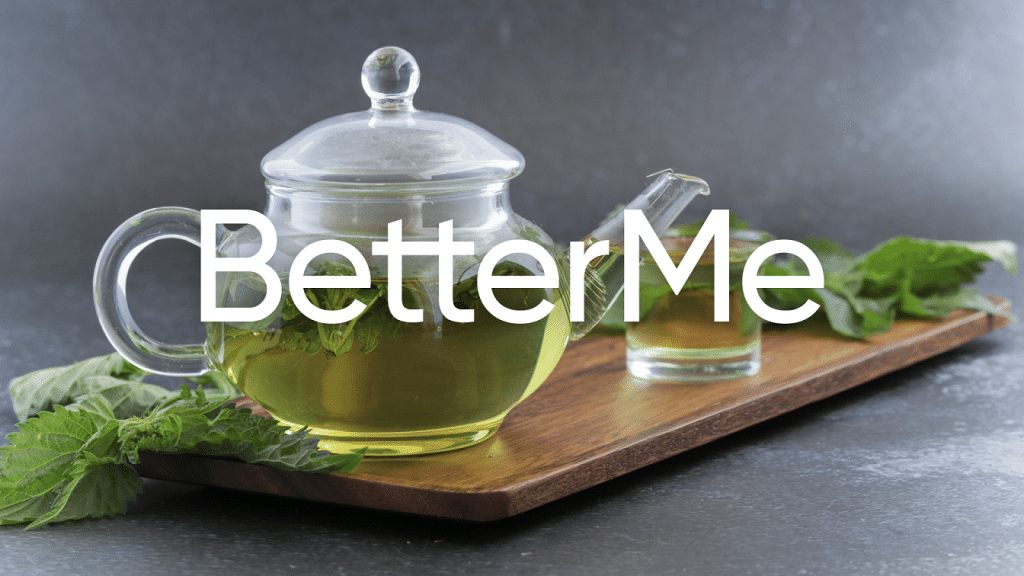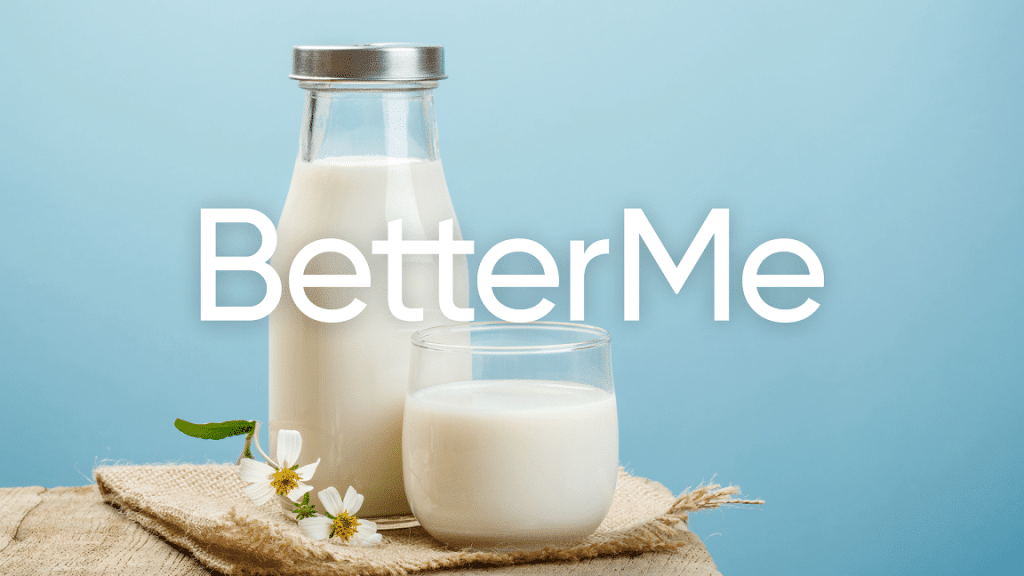Healthy eating habits and maintaining a healthy weight are essential goals for almost everyone. These days, healthy eating means more than just choosing the right foods: for some it also means buying local and organic foods, and avoiding GMOs whenever possible. The healthiest foods to eat are those that your body will benefit from most nutritionally—and they need to be foods you’ll actually enjoy eating because if you don’t like what you’re eating, it won’t matter how healthy the food is. This is why the list of the top 10 healthiest foods to include in your meal plans starts with foods that are both nutritious and delicious. This is the way to make following a healthy diet easy.
Get your personalized
meal plan!
Leafy Vegetables
Dark green leafy vegetables like spinach, bok choy, chard, and kale are nutritional powerhouses. They contain a plethora of vitamins and minerals that play important roles in maintaining health and preventing disease, as well as phytochemicals such as carotenoids, lutein, and beta-carotene (14).
Dark green leafy vegetables also provide the background levels of essential nutrients such as B-vitamins and vitamin K which we need every day for optimal health. There are several hypotheses that have been proposed to help us understand the possible ways they may benefit our health:
Protective Effects Against Cancer
There’s extensive research on the link between consumption of carotenoid-rich foods and reduced risk of cancer. Carotenoids are present in dark green leafy vegetables and also in orange, yellow and red plant foods like carrots, sweet potatoes and tomatoes. Evidence suggests that diets rich in carotenoids (from fruits and vegetables, not supplements) may reduce the risk of cancer, however studies on carotenoid supplements sometimes found the opposite effect. Research on fiber and colon cancer is more consistent – a fiber rich diet such as one rich in fruits and vegetables reduces the risk of colon cancer (19).
Blood Pressure Reduction
The high level of potassium in dark green leafy vegetables is believed to play an important role in reducing blood pressure. In fact, increasing potassium intake by eating more fruits and vegetables reduces the risk of stroke and can even reduce blood pressure in patients with hypertension (14).
Protection Against Heart Disease
The high magnesium content of dark green leafy vegetables is also thought to play a role in reducing blood pressure and decreasing the risk of heart disease, while folate may decrease homocysteine in the blood which is a risk factor for heart disease. Research does show that increased consumption of dark green leafy vegetables decreases the risk of cardiovascular mortality and coronary artery disease (14).
Read More: The Mediterranean Diet Pyramid: Use This To Start A Heart-Healthy Way Of Eating
Whole Grains
Whole grains like whole wheat, brown rice and oats have more nutrients, including fiber, B vitamins and minerals such as iron, zinc and magnesium. They can be a better source of protein than white bread or white pasta. They offer several health benefits, including:
Gut Health
The extra fiber in whole-grain products helps improve digestive health by keeping your body’s digestive systems running smoothly (9).
Rich In Phytonutrients For Disease Prevention
Whole grains also contain special plant compounds known as phytonutrients that help fight disease. These substances are thought to protect against a variety of chronic conditions, from heart disease to some cancers (9).
Healthy Fat And Protein
Whole grains do contain more calories per serving than refined grains because the bran and germ in whole grains contain a lot of healthy fats and proteins. That means you get fewer “empty” calories — the ones that add nothing nutritionally.
If you’re trying to lose weight, be mindful of your portion size because your body will hold on to more calories if it doesn’t get enough nutrients from food. Whole grains should make up about one-quarter of the foods (by volume) you eat every day – or take up a quarter of the space on your plate.
Beans And Lentils
Beans and lentils have a rich heritage as a food staple because they are so versatile and inexpensive. They can be enjoyed by almost everyone, regardless of their dietary preference or restrictions. Here are some reasons why beans and lentils should be included in your diet more often than they currently are:
Rich Sources Of Fiber
Beans and lentils offer high fiber content with low glycemic indices that help keep blood sugar levels stable for hours after a meal, resulting in a decreased appetite and increased feelings of satiety throughout the day. This can be especially helpful for those that need to keep blood sugar and insulin fluctuations at bay. This also results in decreased calorie intake and increased weight loss over time (13).
Excellent Source Of Plant-Based Protein
Protein is an essential nutrient needed by our bodies to build muscle and other tissues. When paired with whole grains, beans and lentils can provide complete protein, meaning that these mixed dishes will contain all of the essential amino acids needed by humans. In addition to plant-based protein, beans and lentils also provide a high concentration of fiber, folic acid, magnesium, iron, potassium and B vitamins (13).
BetterMe app will kick you out of the mental funk, shake off your extra weight, rid you off your energy-zapping habits, and help you sculpt the body of your dreams. Intrigued? Hurry up and change your life for the better!
Improved Gut Health
Beans are rich sources of dietary fiber, which provides a prebiotic effect for the health of our gut microbiome. Prebiotics are non-digestible food ingredients that beneficially affect the host by selectively stimulating the growth and/or activity of beneficial bacteria in the colon, thus improving human health.
Beans and lentils contain a special type of fiber called oligosaccharides, which help make up the intricate structure of plant cell walls. This is important because it makes them indigestible to humans but readily available for fermentation by bacteria in our large intestine. Researchers have also found that these polysaccharide fibers helped maintain beneficial Bifidobacterium in the gut microbiome, a very important bacteria for intestinal and overall health (17).
Fish
The ocean provides us with many seafood products that are full of important nutrients for our bodies. Some of the healthiest fish are tuna, salmon, herring, sardines and trout. The American Heart Association (AHA) recommends that everyone eat at least two servings of fish per week to reap the following benefits (5):
Reduce The Risk Of Coronary Heart Disease (CHD)
We need both omega-3 and omega-6 fatty acids, but most Americans eat too many omega-6s and not enough omega-3s. Eating more fish can help balance out the ratio of these two types of fats found in our food and nourish our brains and hearts.
Omega-3s in fish include eicosapentaenoic acid (EPA) and docosahexaenoic acid (DHA), which may help lower blood triglyceride levels. High triglyceride levels increase a person’s risk for stroke, heart attack, and other cardiovascular diseases (5).
Improved Bone Health
Calcium is essential for bone health, but it isn’t the only nutrient needed. Omega-3s promote calcium absorption and may reduce bone loss. People with higher stores of omega-3 fatty acids from eating fish may be less likely to break down bone later in life (1).
Improved Brain Development
Brain cells are made primarily of fatty acids—very similar to the oil found in fish. Eating fish can nourish brain development during prenatal growth as well as throughout our lives by providing DHA, which is important for brain function. It is believed that diets containing omega-3 fatty acids may help improve learning ability, memory, and attention span (18).
Read More: Healthy Vegetable Recipes For Weight Loss: Shed Stubborn Pounds With These Wholesome Meals
Berries
Berries, such as strawberries, blueberries, raspberries and blackberries are low in calories, high in fiber and packed with vitamins and minerals. Eating these fruits frequently offers the following health benefits:
Cancer Protection
Berries contain phytonutrients, which are called anthocyanins. These substances give berries their bright colors. Anthocyanins act as powerful antioxidants in the body, helping to fight damage from free radicals that can lead to cancer and other chronic conditions (6).
Heart Health
Eating berries can boost the body’s level of nitric oxide, a compound that widens blood vessels and allows for better blood flow. Anthocyanins and other nutrients in berries may also help to reduce bad (LDL) cholesterol and triglyceride levels (6).
Improved Focus And Concentration
Berries contain high levels of antioxidants called flavonoids, which might improve brain function by increasing the amount of oxygen delivered to the brain. Flavonoids may also make it easier to concentrate and focus on tasks during periods of mental fatigue (7).
Nuts And Seeds
Nuts and seeds are nutrient-dense, meaning they provide a high amount of nutrients per calorie. Peanuts, almonds, sunflower seeds, pumpkin seeds, flaxseeds and sesame seeds all offer the following health benefits:
Heart Health
The key to a healthy heart is making important dietary changes. Nuts and seeds are full of healthful fats, fiber and proteins that can help control blood cholesterol levels, lower triglycerides, prevent dangerous blood clots from forming, reduce inflammation throughout the body and regulate blood pressure (16).
Weight Management
Nuts and seeds are an excellent source of protein, fiber and good fats. These nutrients help you feel full longer, maintain energy levels, promote weight loss and improve metabolic health. Nuts and seeds benefit weight loss efforts in several ways (16):
- Provide a feeling of fullness for several hours after consumption
- Help control hunger throughout the day
- Support healthy blood sugar for steady energy
- Improve insulin sensitivity to regulate fat storage
Skin Health
No food can truly nourish your skin from the inside out, but nuts and seeds come pretty close. These nutrient-dense foods contain essential fatty acids like Omega-3s that promote healthier looking skin. They also provide antioxidants to combat free radicals that lead to collagen damage (11).
Better Immune Function
Studies show that nuts and seeds may improve immune function because they’re high in micronutrients like manganese, copper, zinc and vitamin E. These nutrients play a role in activating immune cells so they can fight infections more effectively (15).
Improved Cognitive Function
Some studies suggest that eating nuts such as walnuts may improve learning capacity and motor skills in older adults with mild cognitive impairment.This is because nuts contain antioxidants like vitamin E and polyphenols that prevent memory loss by protecting neurons from damage caused by free radicals. Nuts also contain omega-3 fatty acids, which are important for healthy mental function (15).
Lean and toned up body isn’t just a far-fetched fantasy. Check out the BetterMe app and watch it propel your weight loss journey into high gear!
Green Tea
Green tea is made from steamed or dried unfermented leaves of the tea plant, Camellia sinensis. Green tea has been consumed for medicinal purposes in China and Japan for thousands of years. In recent years it has gained worldwide popularity for its potential health benefits:
Anti-Cancer Properties
Laboratory studies have suggested that catechins (antioxidants found in green tea) may halt or slow the growth of cancer cells. Polyphenols — which are antioxidants found in some fruits, vegetables and beverages – interfere with the division of cancer cells, slowing their growth (2).
Boosts Metabolism
Several studies have suggested that drinking green tea may boost our metabolism, enabling our bodies to break down and process fats more quickly. Researchers attribute this effect to catechins, specifically one called EGCG (which makes up about 30 percent of the catechins found in most varieties of green tea). It’s thought that EGCG might accelerate the liver’s ability to burn fat by inhibiting an enzyme called citrate lyase, which our body uses to make fat from carbohydrates (2).
Lowers Cholesterol
Green tea may help reduce levels of LDL, or “bad” cholesterol, according to research published in the American Journal of Clinical Nutrition. The catechins found naturally occurring in green tea are thought to inhibit the absorption of cholesterol by blocking intestinal enzymes that break down dietary fat (2).
Effects On Type 2 Diabetes
A study published in 2007 found that people who drank three to five cups of green tea daily were less likely to be diagnosed with type 2 diabetes (2).
Improved Oral Health
Green tea has been used in Chinese medicine to treat gum disease. Recent studies have backed up this traditional use, finding that components of green tea appear to neutralize or prevent bacteria from sticking onto teeth and gums (8).
Water
Water is essential to life. It makes up about two thirds of the weight of a healthy adult body and between 55 and 78% of an adult’s brain. Every system in the body depends on water.
Water regulates our temperature, carries nutrients and oxygen to our cells, and removes waste products from them, keeps joints and organs lubricated and helps make saliva, the stuff that helps break down our food and keeps our breath fresh (12).
Water should be your drink of choice whether you’re thirsty or not — it’s just as important to keep hydrated when you’re not feeling parched as it is when you are.
People who are outside in cold weather for long periods of time, those who sweat heavily from exercise, and people with high blood pressure are also at higher risk for dehydration.
The amount of water you need every day is different for everybody, but some general guidelines can help you determine how much to drink each day. You should try to get 8 glasses of fluid a day, which is about two thirds of a gallon. This is just a general guideline, though, because your need for liquids varies according to time of day and activity level.
For example: If you’re not exercising much and are not outside in hot weather, you might need less liquid than usual. On the other hand, if you’re exercising intensely or working in extreme heat, you can lose much more fluid than you usually would and need to drink much more water.
Generally, though, if you’re thirsty, it’s a good sign that your body needs more fluid.
Fermented Foods
Fermented foods like sauerkraut, kefir and yogurt are easier to digest than fresh vegetables. They also contain additional nutrients that are broken down during the fermentation process. People who regularly eat fermented foods tend to have leaner bodies with lower body fat percentages. Fermented foods are good for your health because they provide probiotics which can help improve digestion, strengthen the immune system and fight off the growth of harmful bacteria (10).
Citrus Fruits
Citrus fruits are good for you because they contain a high level of vitamin C, or ascorbic acid, which your body cannot produce on its own. Vitamin C is an antioxidant that enhances the immune system and protects against diseases such as scurvy and cancer. The majority of citrus fruits – including oranges, lemons, grapefruits, and limes – are high in vitamin C (3).
Citrus fruits also contain flavonoids such as limonin, which may help lower cholesterol levels (3).
The Bottom Line
While the foods in this list are among the healthiest, they’re not a magic bullet for good health. You should also strive to exercise regularly, maintain a healthy weight and consume plenty of fruits and vegetables each day.
DISCLAIMER:
This article is intended for general informational purposes only and does not address individual circumstances. It is not a substitute for professional advice or help and should not be relied on to make decisions of any kind. Any action you take upon the information presented in this article is strictly at your own risk and responsibility!
SOURCES:
- Analyzing the association between fish consumption and osteoporosis in a sample of Chinese men (2017, nih.gov)
- A Review of the Role of Green Tea (Camellia Sinensis) in Antiphotoaging, stress resistance, neuroprotection and autophagy (2019, nih.gov)
- Citrus fruits as a treasure trove of active natural metabolites that potentially provide benefits for human health (2015, nih.gov)
- Consumption of fruits and vegetables reduces risk of pancreatic cancer: evidence from epidemiological studies (2016, pubmed.gov)
- Eating fish twice a week reduces heart stroke risk (2018, heart.org)
- Enjoy the health benefits of berries (2020, aicr.org)
- Flavonoid-Rich Mixed Berries Maintain and Improve Cognitive Function Over a 6h Period In Healthy Young Adults (2019, mdpi.com)
- Green tea extract for periodontal health (2011, nih.gov)
- Health Benefits of Dietary Whole Grains: An Umbrella Review of meta-analyses (2017, nih.gov)
- Health benefits of fermented foods (2017, nih.gov)
- Health Benefits of Nut Consumption (2010, nih.gov)
- How much water should you drink? (2020, harvard.edu)
- Legumes: Health Benefits and CUlinary Approaches to Increase Intake (2015, nih.gov)
- Nutrients and bioactives in green leafy vegetables and cognitive decline (2018, nih.gov)
- Nuts and Human Health Outcome: A Systematic Review (2017, nih.gov)
- Nuts and seeds (n.d., betterhealth.vic.gov)
- Oligosaccharides composition in eight food legume species as detected by high-resolution mass spectronomy (2015, pubmed.gov)
- Perceptions of the risks and benefits of fish composition: Individual choices to reduce risk and increase health benefits (2009, nih.gov)
- The Benefits and Risks of Certain Dietary Carotenoids that Exhibit both Anti- and Pro-Oxidative Mechanisms- A Comprehensive Review (2020, nih.gov)
















